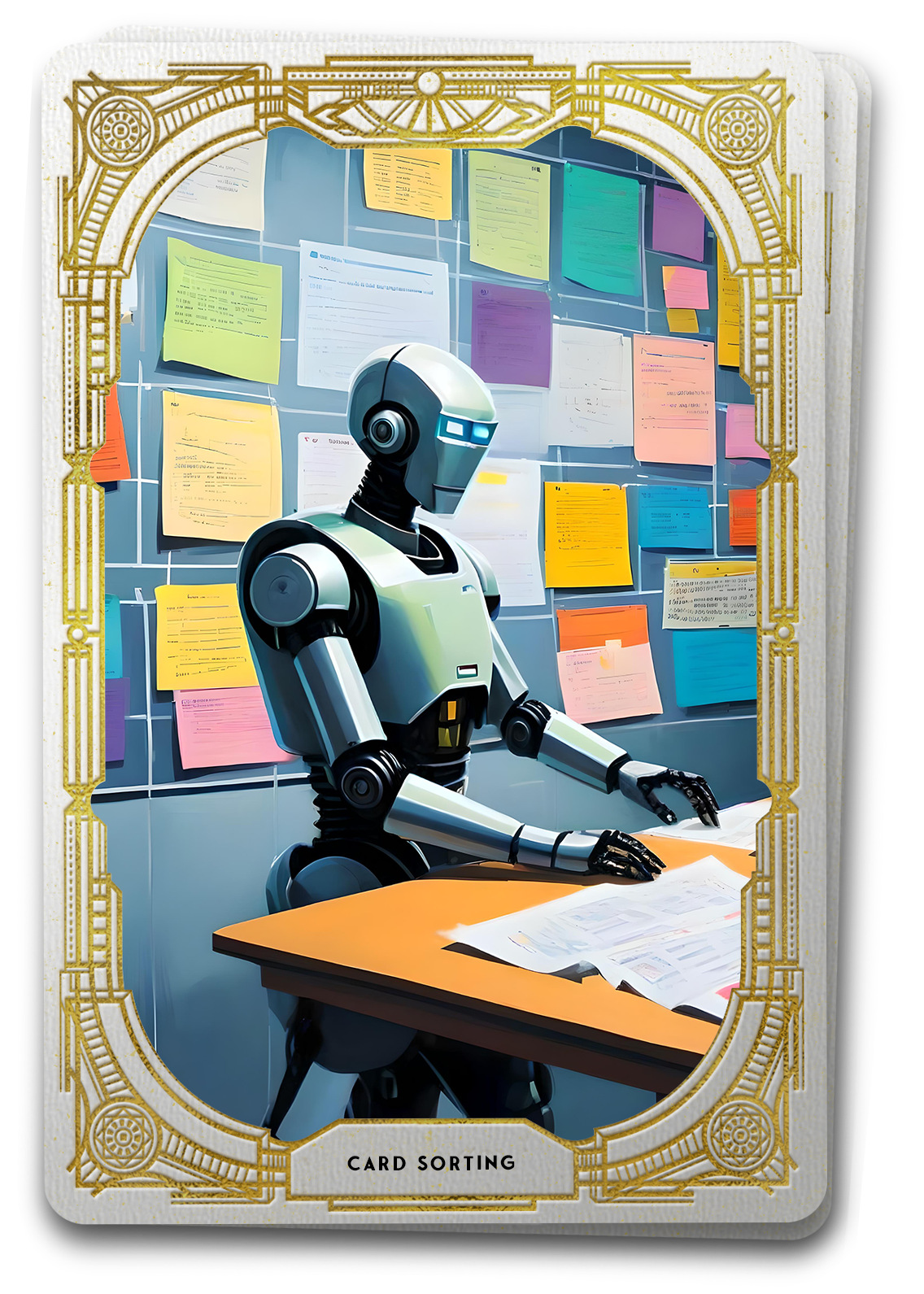
The Tarot Reveals Hick’s Law:
Users are going to take longer when presented with numerous and/or complex choices.
Hick’s Law Defined: Simplifying Choices
In the delicate dance of form and function, imagine a user’s journey through your website as a stroll through a bustling city. The streets are lined with an array of shops, each offering different products and services. The urban planner – the hidden forces that influence the time it takes your visitors to decide which shop to enter – is Hick’s Law. Just as a city with too many options can overwhelm, a digital space inundated with choices can create decision paralysis. Hick’s Law explains this by stating that the time it takes to make a decision increases with the number and complexity of choices.
If your website is this vibrant city, then it’s easy to understand that users are both explorers and decision-makers on a journey through your business. Each page, link, or button is a shop in this city, presenting a potential choice. Hick’s Law, our trusted city planner, asserts that as the number of shops (choices) multiplies, the time it takes for users to decide where to go lengthens. Therefore, simplifying the decision-load becomes paramount in guiding users seamlessly through their journey and, by extension, triggering the desired user actions – like conversion.
The Core of Hick’s Law
The Paradox of Choice:
- Explanation: Hick’s Law challenges the notion that more choices are always better. In fact, it brings to light the paradox of choice—the more options users face, the more time it takes for them to make a decision.
- Best Practices: Streamline choices by prioritizing essential options. Aim for clarity rather than overwhelming users with an abundance of selections. Unless you’re selling plumbing supplies, the options you present to a user should not include everything plus the kitchen sink!
Simplicity is a Design Superpower:
- Explanation: Embracing simplicity in design becomes a superpower against decision fatigue. By minimizing the number of choices, designers empower users to navigate interfaces swiftly and make decisions with ease.
- Best Practices: Opt for clean and straightforward designs. Focus on presenting key choices prominently, reducing cognitive load for users.
Streamlining Decision Pathways: Applying Hick’s Law
User-Centric Information Architecture:
- Application: Leverage Hick’s Law to inform information architecture decisions. Group related choices logically, ensuring users encounter a manageable set of options at each decision point.
- Example: Simplify menu structures, categorize content, and guide users through a step-by-step decision process.
Progressive Disclosure:
- Application: Implement progressive disclosure to gradually reveal information and choices. Present initial essential options and provide more detailed choices as users progress.
- Example: In form designs, display core fields first and offer advanced options through expandable sections.
Visual Hierarchy and Prioritization
- Application: Utilize visual hierarchy to emphasize primary choices and de-emphasize secondary ones. Guide users towards the most critical decisions without overwhelming them.
- Example: Bold colors, contrasting fonts, and size variations can highlight key options, steering users toward the most relevant choices
Harmonizing Hick’s Law with UX Principles
Fitts’s Law and Decision Speed:
- Connection: Hick’s Law finds alignment with Fitts’s Law, emphasizing that larger, more accessible targets can contribute to faster decision-making. Design interfaces with this synergy in mind for an enhanced user experience.
Affordances and Clear Pathways:
- Connection: Affordances, the cues indicating possible actions, play a pivotal role in harmonizing with Hick’s Law. Clearly defined affordances guide users along straightforward decision pathways, reducing decision-making time
User Feedback and Iterative Refinement:
Connection: User feedback becomes invaluable when applying Hick’s Law. Iteratively refine designs based on user insights to ensure that decision pathways align with user expectations and preferences.
Cultivating Design Simplicity: Practical Insights and Actions
Choice Reduction Strategies:
- Action: Evaluate current interfaces and identify non-essential choices. Implement strategies such as categorization, progressive disclosure, or menu simplification to reduce decision points.
Visual Hierarchy Optimization:
- Action: Review visual hierarchy in interfaces. Ensure key choices are visually prominent while less critical options are presented in a subdued manner. Test and refine the hierarchy for optimal decision pathways.
User-Centric Iterative Design:
- Action: Embrace iterative design based on user feedback. Regularly refine interfaces, considering user preferences and the impact on decision-making time.
By applying Hick’s Law, you can start to envision how your site might be transformed into a well-organized cityscape, where each choice is thoughtfully curated for the benefit of your users. Embracing these principles becomes a design superpower—a means to simplify decision pathways, alleviate decision fatigue, and enhance user experiences. When you reduce the complexity of choices, you not only streamline decision-making but also empower users to navigate with ease – thus, paving the way for a more straightforward, intuitive, and delightful digital journey for your users.
Follow us for more insights on unraveling the mysteries of UX as we continue our journey through “The Tarot of User Experience.”





